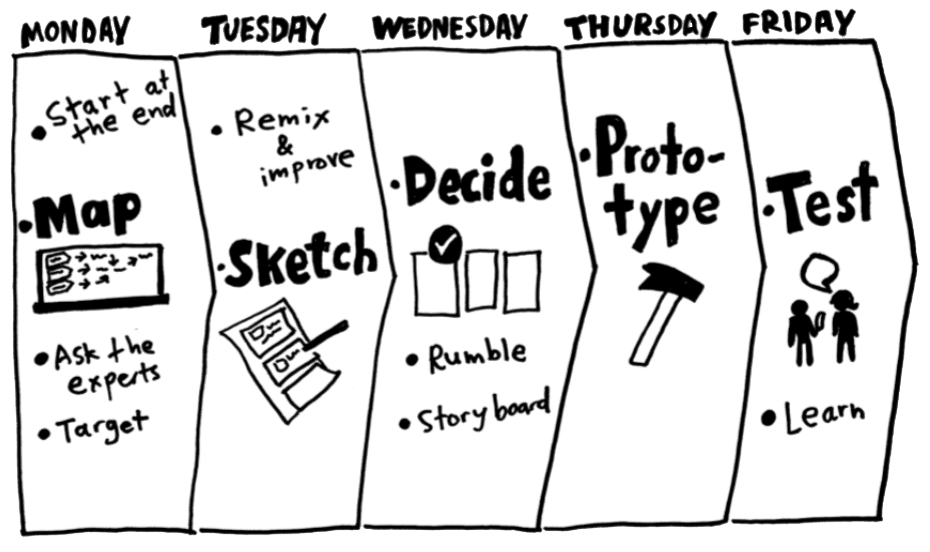The Food Company
The Food Company is a Dutch food producer generating over three hundred million Euro annual revenue. It markets and sells its products through three key channels: food retail, food wholesale and out-of-home.
The Food Company operates on a global scale and has its headquarters in the Netherlands.
The portfolio consists of mainly pastry products which are being produced in several production locations. Marketing and sales are taken care of centrally, as is logistics and production planning.
The out of home channel in the Netherlands is being served by a small field sales team of which its members are mostly in personal contact with local out-of-home business partners.
The challenge
The Food Company was facing several challenges
- There were more than 1000 out of home business partners, mostly independent entrepreneurs such as restaurant owners and franchise holders of various larger out-of-home chains
- These business partners were heavily targeted by competitors of The Food Company
- The support level that these business partners required was increasing and complaints concerning the lack of reachability of The Food Company were piling up
- First signs of declining revenues were already starting to show
Several internal (marketing, sales, channel management, etc) and external stakeholders (business partners) had already voiced ideas about how to solve these issues. But so far, The Food Company had not been able to converge these different voices into one agreed upon solution and working approach. Many meetings and brainstorm sessions had already been held but not one had led to satisfying results for all stakeholders. This was due to too many different views on the problem and insufficient process skills to tie these views into one overarching vision.
We were asked to help, and as the problem had been left without a solution or sufficient action for too long, we needed to act quickly.
Our approach
To find solutions for complex, multidisciplinary problems, and to do this really fast and involving various internal and external stakeholders, we often deploy the design sprint process as developed by Google Ventures. Based on our experience we have modified a few elements in the approach and added several design thinking practices.
We tackled the issue in two sprints:
A research sprint in order to better understand the problem and get all members in the multidisciplinary team on the same level of information and understanding
A design sprint to collectively design solutions for the problem and get these tested and verified with external stakeholders
Assembling the team
Before starting the sprint-process we formed a team of all relevant disciplines in The Food Company, including representations from:
- Marketing
- Brand management
- Category management
- Digital marketing
- Field sales
- Sales support / inside sales
- Customer service
- Finance
As all these disciplines were involved in the problem and were getting a role in implementation of our plan, it’s of the greatest importance to have them actively participating in the sprint process.
At first several participants were quite skeptical. We heard people saying things like: “We have already tried that, why would it work now”, “Sales just needs to work harder”, “Marketing just does not give us the right tools”, and so on.
In a first round of individual interviews with all team members we were able to address all concerns and developed a sufficient trust level to get the process going with all desired participants.
The research sprint
As the level of understanding and the amount of background information of the various stakeholders varied largely and was overall insufficient to tackle the problem, we started with a five-day research sprint.
The objectives of the research sprint were threefold:
-
-
-
- To collect all information The Food Company already had on the problem
- To identify the information that was not yet available and to subsequently collect that information
- To establish common understanding of what was to be the core problem that needed to be solved and clearly distinguish between main issues and issues of lesser importance
-
-
Normally a sprint is executed in five consecutive days, but because most of the team members could not be missed at their daily jobs, we executed the sprint in a period of 5 weeks, with one sprint day per week. This turned out to create a good practical balance between relatively quick sprint results on one hand, and keeping daily operations going on the other hand. It generated an additional advantage, being that in between sprint days we had time to do some extra research and work on tasks that would help the next sprint day.
When collecting all available information and identifying info that was still lacking, we realized that the voice of the customer was insufficiently represented in the team. Sales had been ‘hard selling’ and thus forgotten to ask their clients what their problems really were. To solve this problem, we identified a group of 100 customers we asked to participate in our sprint, in exchange for early access to whatever solutions we were going to develop for them. About 25 or so responded positively which was more than enough for our purpose.
In depth interviews, based on a thoroughly designed interview guideline and a digital survey gave us clear answers to the research questions we had listed.
Within five days the team was able to interview 12 customers, to get digital survey results from 25 customers, crunch all CRM and ERP data and build a clear picture on the core problem that needed to be solved and created a plan for the next phase: the design sprint.
After two days of sprinting the Covid-19 lockdown became effective. We managed to quickly transfer all activities into the digital domain and continued the work by means of Microsoft Teams and the digital infinite whiteboard from Miro. It required a bit of practice, for which we had designed a crash course, and by means of user created templates and forms we kept the process going at high pace and high energy levels.
The design sprint
The design sprint was also executed in 5 days, of which each had a specific focus.
Day 1: Mapping out the problem
During this day we collectively reviewed, discussed and internalized all acquired information from the research sprint. We agreed upon the core problem to solve and the roadmap for the coming days. At the end of the day each team member was given the assignment to find sources of inspiration for our final solution.
Day 2: Defining solutions and picking the best
This day usually (and also this time) starts with so called lightning demos. Each team member presents (lightning fast) the sources of inspiration for a solution. These can be in any form (websites, movies, sketches, etc) and contain any content (scientific research, abandoned projects, commercials, successful or failed startups, etc).
Based on this big pile of inspiration we used the rest of the day to define our customer profile and persona and a value proposition that would solve our problem. Again, fully done in a digital environment and making use of templates and forms we had developed for this purpose.
Day 3: Story boarding the solution
This day was used to draft a customer journey and map out the experience we wanted the customers to have in using our solution. This experience would lead to increasing and improving the contact that The Food Company had with its distribution partners, without having to increase its field sales force.
Day 4: Prototyping
On day four our ideas really came to life! We called in the help of a UX designer who sat with the team to build a prototype that would closely resemble the actual service we had designed. Core of the service would an app that would allow the distribution partners of The Food Company to get in touch with The Food Company concerning all sorts of issues, ranging from requesting additional Point of Sales materials, to expediting of quick deliveries, but also get best practice information on marketing and promotion activities and getting in touch personally with their own account manager.
The fact that The Food Companies team members got to see what the new service actually looked like made them even more enthusiastic than they originally were. Most of the initial skepticism was gone and salespeople were proud to test the prototype with their distribution partners during day 5.
Day 5: Testing with customers
The last day of the sprint is all about testing the prototype with customers. We set out (again, digitally) to present the protype to customers, asking them what they liked, disliked, how it could solve the issues that they had shared with The Food Company, and so forth. We used both digital surveys as well as personal interviews to get as much as possible information and feedback.
Although the whole concept was based upon a real and thorough understanding of the customer and his challenges, still this round of feedback provided lots of valuable information on further improvement potential which will be incorporated in the first version of the actual solution.
In parallel to testing with customers we also created a first order business case and documented all outcomes of the process.
Results
Finally, the following deliverables were created:
- We validated that a perceived customer problem actually existed and that there was a real and urgent need to solve it
- We created an initial value proposition design that could solve the customer problem
- Via a solution mockup we tested the value proposition and received confirmation from customers that this would actually solve their problem
- We have built a business case including various scenarios, showing various financial implications of actually implementing and marketing the solution we had designed
Embedding Results
The Food Company had no earlier experience with design sprints and with app development to improve their B2B relationships. After this experiment they were so satisfied with the results that they decided to embed this project into their strategic marketing and IT roadmaps and embrace design sprinting as a key method to solve complex multidisciplinary business challenges.
Convenience Food Producer
A convenience food producer was experiencing difficulties in one of its marketing and distribution channels. The out-of-home channel (i.e. restaurants, kiosks, theaters, public transport) needed increased attention from scarce sales resources but at the same time this channel got more and more diversified and generating less revenue per partner, even before Covid-19 kicked-in.
In two five-day design sprints, we helped them to develop a new way of managing this channel, leading to intensified customer contacts at lower costs.
Although a design sprint is typically held with all participants physically in the same room, we tailored the format to an all-digital Covid-19 proof way of working.
This document describes a typical example of our work with a typical client of ours we will call ‘The Food Company’. Of course, the company exists in real life but because of the nature of what we are about to share we thought it would be prudent to not disclose any real names. Also, other facts about The Food Company are fiction but in line with the actual situation.











